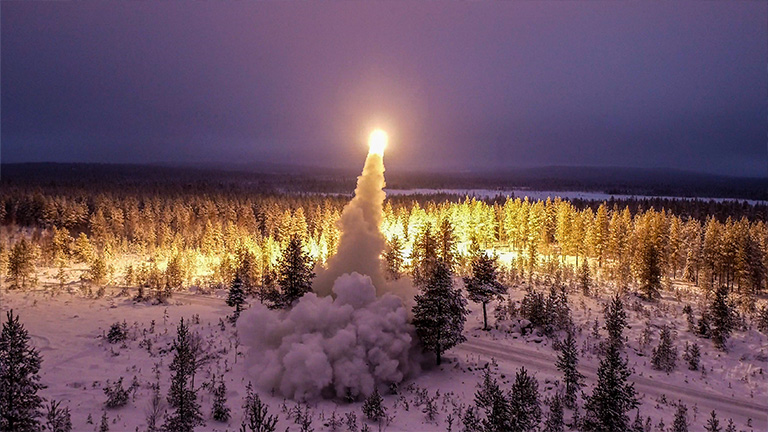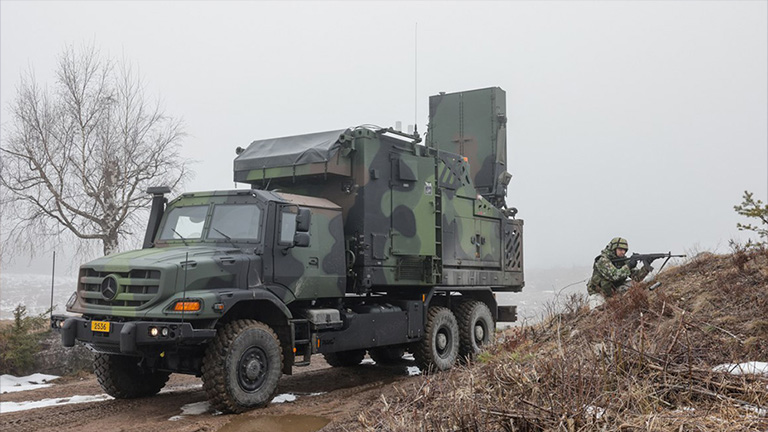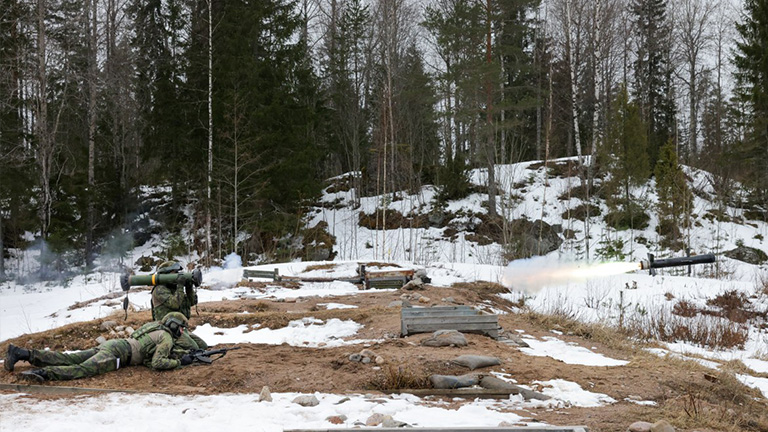Army combined fires stand for a capable entity

The Army combined fires are an entity formed by combined-arms interoperable operating to which also joint fires of the Air Force, of the Navy, and of the Allies are integrated. The capabilities of combined fires have been developed in the long term for years now.
Combined fires deliver effects on an adversary in a requested area by means of joint use of a number of capabilities, and provide the prerequisites for battle success by disrupting the adversary to the extent that their offensive becomes blocked.
Countermobility turns the adversary’s movement to a requested location, blocks it, or fixes the movement by disrupting the adversary. Countermobility measures also protect own operating, and indirectly affect the offender’s battle plan.
Blocking or turning the adversary’s movement to a suitable terrain point enables effectively destroying the adversary’s main battle tanks and armoured vehicles by anti-tank weapon systems.
Indirect artillery fires support troops engaged in combat by concentrating all fires available on the same target as applicable. Counterbattery operating neutralises the adversary’s fire units. Advance planned and prepared targeting ensures effective indirect fires. Sustaining an extensive tactical reconnaissance and forward observation network provides the situation picture supporting command and control.
Longer ranges increasingly effectively
The artillery system forms a comprehensive entity of fires that comprises field artillery, multiple-launch rocket systems, and mortar systems.
Artillery fires prevent the adversary’s power from being projected excessively by disrupting the adversary’s troops in the depth, by neutralising the adversary’s command and control systems and combat service support, as well as by destroying the adversary’s long-range artillery and key targets. The objective of the artillery system development has involved increasing the fires’ capacity for longer firing ranges, and ammunition effects. Long-range fires enable protecting also friendly fire units from the adversary’s joint effects.
In recent years, the longer firing ranges have presupposed developments concerning, especially, MLRS, self-propelled howitzer, forward observation, ammunition, command and control, and battle management systems.
The upgrade of the MLRS fleet improves the weapon system’s frame, gun mounts, and fire control and battle management system, and involves its overhaul to as good as new. The upgrade ensures the usability and capability of the MLRS well into the 2050s, and allows using next-generation munitions and payload interoperability. The long-range fires capacity of the MLRS fleet has also been reinforced by the procurement of GMLRS AW and UNITARY and GMLRS ER ammunition with capacity for area and point target effects.
The combat efficiency of the artillery has been enhanced by the armoured pieces of the self-propelled 155-mm howitzer (K9). With good mobility and rapid fire-opening capacity, they enable providing long-range fire support for troops in a wide area. Operationally reliable in Finland, the armoured self-propelled howitzers have provided excellently validated use cases in training persons liable for military service and conducting fires.
The improvements to production of heavy ammunition has multiplied the production capacity compared to levels predating the war in Ukraine. The increase in domestic production will enhance military security of supply. Additionally, Bonus system artillery cluster rounds have been procured for the Army for increased efficiency in anti-armour. Long-range fires increase the firing range of the field artillery 155-mm equipment up to 40 kilometres.
With increased accuracy at a higher speed
The most critical tasks of the artillery involve neutralising the adversary’s fire systems to protect own troops, ensure sustained operating capacity, and enable own operation success. The new artillery weapon locating radars locate the adversary’s firing fire units, and direct and control counterbattery fires.

The artillery weapon locating radar measures the high-explosives or rockets detected in the sky, and, based on their ballistic trajectory, calculates their start and target points. The data on the located enemy fire units are then transmitted as fire missions to the friendly fire units reserved for counterbattery operating, and included in the situation picture as enemy observations. The radar directs the fire of the own fire unit to the located target.
A multipurpose radar, the artillery weapon locating radar also monitors the air space, and, alongside counterbattery operating, is capable of locating aircraft and drones, which improves troops’ force protection. The Karelia Brigade has started training conscripts in operating the artillery weapon locating radars, and the first WLR crews are to muster out into the reserve during 2024.
Infantry drones procured for troops on tactical reconnaissance, surveillance, and targeting missions will enhance forward observation activity and reconnaissance from the above.
As the Finnish-made MPL15 target locating equipment used for forward observation, reconnaissance, and firing position measurement activity will be upgraded, new pieces of the latest version of this equipment, MPL24, will also be procured. Thermal imagers and laser range finders of this equipment are to be replaced by better ones, and software upgrades will allow using new measurement functions. Forward observation gear, such as binoculars for sighting in and plotters for measuring distances, will be renewed.
The fire control and battle management system is currently being upgraded. In the future, the system will allow digital transmission and reception of fire missions from the Allies.
The command and control system will be made interoperable allowing among Allies the distribution of the shared situation picture and other equivalent support services required in command and control.
The infantry’s new anti-tank missiles SR and 2000 LR2 contribute to the Army anti-armour capability significantly, and supplement the medium- and long-range capacity.

Primarily developed for countering main battle tanks, the SR anti-tank missile is also effective in destroying armoured fighting vehicles, lightly armoured vehicles, and arms fortifications. The 2000 LR2 anti-tank missile enables destroying tanks also when launched in no line of sight. Both the anti-tank missiles are equipped with the type of tandem charge warheads with a precursor charge that offers armour penetration to overcome the explosive reactive armour of a tank.
The Army continues to sustain its strong capability for the use of anti-tank mines. Obstacle groups enhance the terrain’s natural obstacle value, and are always used in conjunction with other joint effects and use of troops. Recent procurements have improved the speed of countermobility. Combat engineer units conducting countermobility measures have been supplied with mine chamber drills, multi-purpose trailers, and work machines. In the future, technological developments will increasingly inform the operating principles, distance control, and locating of mines.
The Army combined fires stand for a capable entity that continues to develop as concerns, among others, weapon systems’ ranges, accuracy, and mobility.



